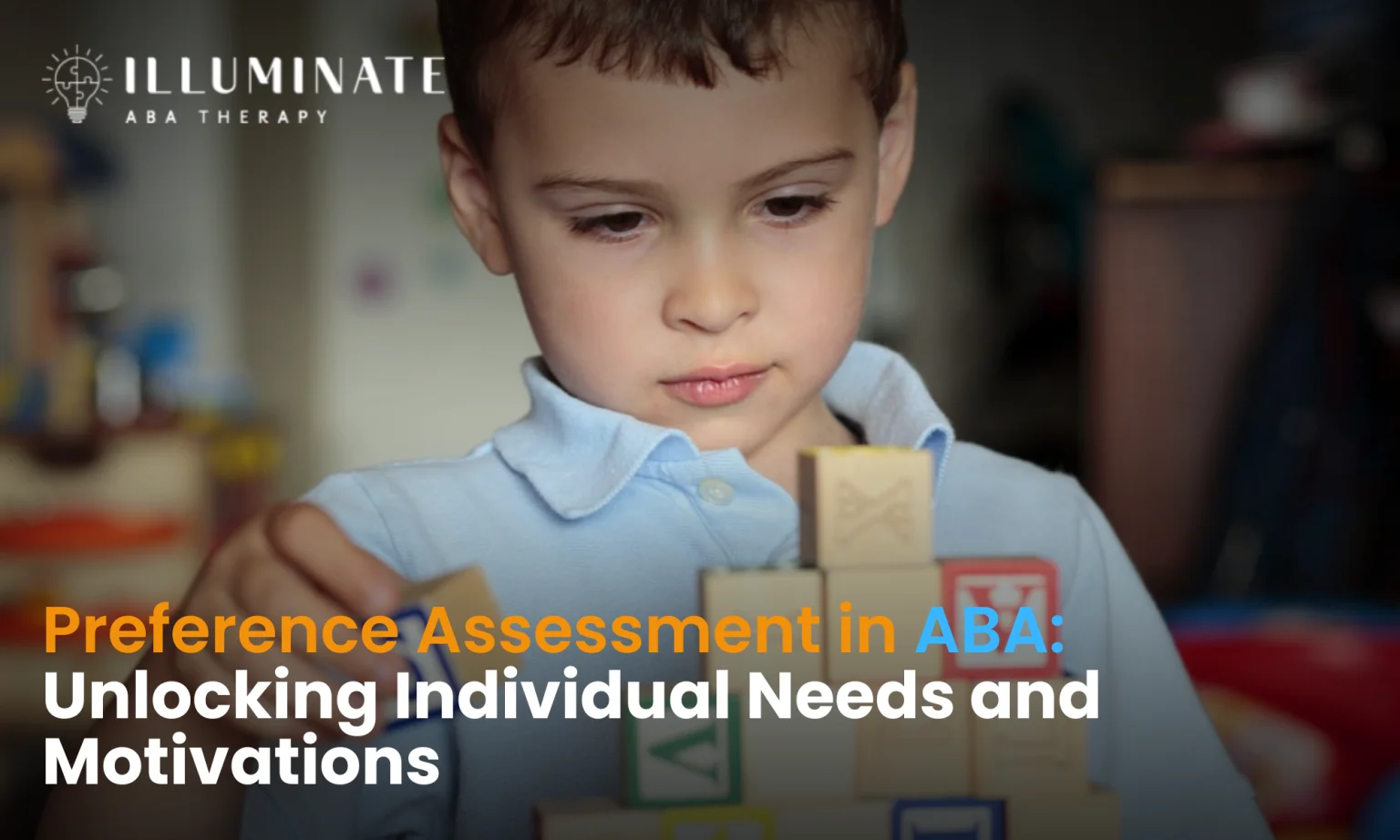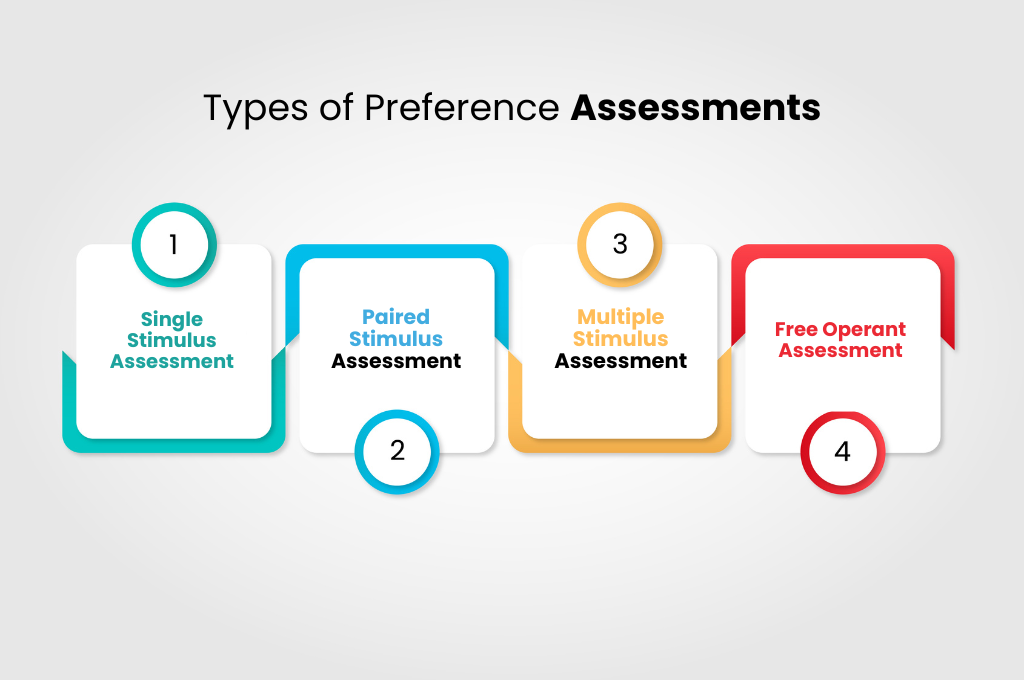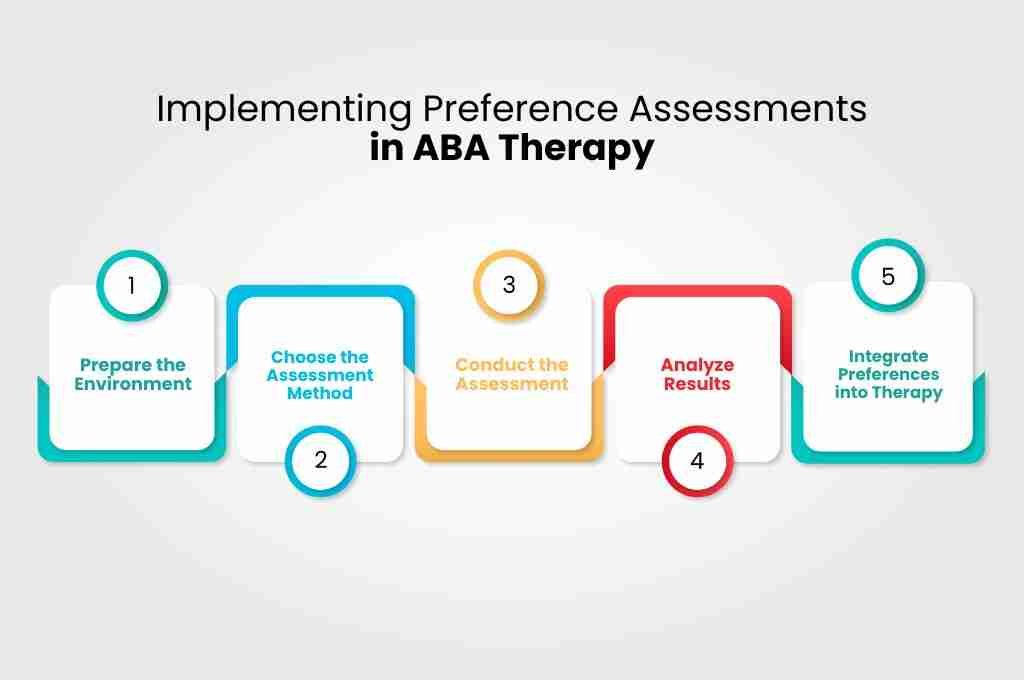Preference Assessment in ABA: Unlocking Individual Needs and Motivations
ABA TherapyJuly 17, 2025

In the world of Applied Behavior Analysis (ABA) therapy, understanding what motivates an individual is crucial for effective intervention. One of the most effective ways to tap into these motivations is through preference assessments. This process not only helps therapists tailor their approaches but also empowers clients by aligning therapy with their interests and desires.
In this article, we will explore preference assessments in detail, discussing their importance, methods, and practical applications in ABA therapy.
What is a Preference Assessment?
A preference assessment is a systematic method used to identify an individual’s preferred items, activities, or stimuli. This process is essential in ABA therapy as it helps practitioners determine what motivates a client, which can significantly enhance engagement and participation in therapeutic activities.
Why Are Preference Assessments Important?
- Enhancing Motivation: By identifying preferred items or activities, therapists can use these preferences as reinforcers during sessions. This increases the likelihood of desired behaviors being exhibited.
- Individualizing Treatment: Every individual is unique; what works for one person may not work for another. Preference assessments allow therapists to tailor interventions based on individual preferences.
- Building Rapport: Understanding a client’s likes and dislikes fosters a stronger therapeutic relationship. When clients see that their preferences are valued, they are more likely to engage actively in therapy.
- Improving Outcomes: Research shows that when interventions are aligned with an individual's preferences, the effectiveness of those interventions improves significantly.
Types of Preference Assessments

There are several methods for conducting preference assessments in ABA therapy. Here are some commonly used techniques:
1. Single Stimulus Assessment
In this method, items are presented to the individual one at a time. The therapist observes whether the individual engages with the item and how long they interact with it. This simple approach can be particularly effective for individuals who may have difficulty making choices.
2. Paired Stimulus Assessment
Also known as a forced-choice assessment, this method involves presenting two items simultaneously and asking the individual to choose one. This process is repeated with different pairs until all items have been assessed. The frequency with which each item is chosen indicates its preference level.
3. Multiple Stimulus Assessment
This approach presents several items at once (usually three or more) and allows the individual to select their preferred item(s). After selection, the remaining items are rearranged for subsequent trials. This method is efficient and provides a broader understanding of preferences.
4. Free Operant Assessment
In this method, various items or activities are made available to the individual within a designated area. The therapist observes which items the individual engages with over a specified period. This approach mimics natural settings and can yield insights into spontaneous preferences.
Visual Representation of Preference Assessment Types
Here’s a simple chart summarizing the different types of preference assessments:
Assessment Type
Description
Best For
Single Stimulus
Presenting one item at a time
Individuals who struggle with choices
Paired Stimulus
Presenting two items for forced choice
Clear preference identification
Multiple Stimulus
Presenting several items for selection
Efficient preference ranking
Free Operant
Allowing free access to multiple items
Naturalistic observation
Implementing Preference Assessments in ABA Therapy

To effectively implement preference assessments, follow these practical steps:
Step 1: Prepare the Environment
Ensure that the assessment environment is free from distractions and conducive to focus. Gather a variety of potential reinforcers—these could be toys, activities, or snacks that might interest the individual.
Step 2: Choose the Assessment Method
Select an appropriate assessment method based on the individual's abilities and preferences. For example, if they have difficulty making choices verbally, consider using a single stimulus assessment.
Step 3: Conduct the Assessment
Follow the chosen method systematically while observing the individual's reactions and engagement levels with each item or activity presented.
Step 4: Analyze Results
Once completed, analyze the data collected during the assessment. Identify which items were most frequently chosen or engaged with and rank them according to preference levels.
Step 5: Integrate Preferences into Therapy
Incorporate identified preferences into therapeutic interventions as reinforcers for desired behaviors. For instance, if a child prefers playing with blocks, use block play as a reward for completing tasks during sessions.
Practical Tips for Success
- Be Patient: Some individuals may need time to express their preferences fully.
- Stay Flexible: Preferences can change over time; re-evaluate regularly to ensure interventions remain relevant.
- Involve Caregivers: Collaborate with parents or caregivers to gather insights about potential preferences outside of therapy sessions.
- Document Findings: Keep detailed records of preference assessments to track changes over time and adjust strategies accordingly.
Conclusion
Preference assessments are invaluable tools in ABA therapy that help identify what motivates individuals, leading to more effective interventions and enhanced engagement.
By understanding and implementing these assessments thoughtfully, therapists can create personalized treatment plans that resonate with clients’ interests and needs.
As you explore this topic further or consider applying preference assessments in your practice or home environment, remember that every individual is unique—what works best will often depend on ongoing observation and adaptation.
For more information on ABA therapy techniques or personalized guidance tailored to your child's needs, feel free to reach out to our team at Illuminate ABA Therapy!
Read More About: Negative Reinforcement in ABA Therapy


